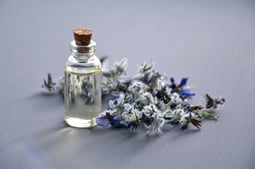

How does our skin work?
Photos Instagram / skin_by_phil
Words Nolyce Cerda
Share the article on
Taking care of your skin is very good. Understanding it to give it what it really needs is even better. Here's what you need to understand how it works in order to act correctly.
The skin is our largest organ. It extends on almost two square metres of an area. Dermatologist Yael Adler likes to use the metaphor of the brick wall to explain concretely how the skin is made up. In her book "What your skin has to say about you" (Pocket), she describes the skin as a "brick wall with an acid coating" that is in constant contact with our environment and acts as an "air-conditioner", regulating our body temperature.
Concretely, the skin is divided into three layers (epidermis, dermis and hypodermis), the first of which splits into four cell layers (cornea, granular, thorny and basal). The epidermis, the first layer we see, protects us from external aggressions by forming the protective skin barrier. Each layer has its own cells of varying ages: "All the cells of the epidermis, which began as babies, go through each stage before becoming, at the very top, the barrier layer", she writes before continuing: "This life course thus takes them from the inside outwards, in about four weeks. "What we call dead skins are in fact these cells at the end of their life. Sometimes, however, they are not easily eliminated and end up clogging the pores and generating imperfections. Hence the importance, from time to time, of a mechanical or chemical exfoliation to give it a little boost.
The skin is therefore a constantly moving organ. It communicates between the inside and the outside constantly. It is also populated by micro-organisms, that is to say, a whole heap of bacteria that make up the microbiota and create the relatively acidic pH of the epidermis. When a flaw occurs through an imperfection, a disturbance of the microbiota or another disease, the skin no longer plays its role as a barrier and allows external aggressions (toxins, pollution, bad bacteria etc.) to penetrate while no longer being able to preserve its inner world such as maintaining the right level of hydration for example. "Result: the skin dries out, takes on a crumpled and wrinkled appearance. The result is dry, wrinkled and wrinkled skin, with a crumpled, crumpled appearance. Lacking lipids and moisture, it becomes dull, wrinkled and often itchy. "The skin becomes a kind of personal archive. It keeps in it our rhythm/quality of life, the care we give it or not and our diet. In traditional Chinese medicine, « face mapping » is based on the principle that the location of a pimple on a specific area of the face tells us a lot about the dysfunction of a specific organ. The skin is therefore a whole that requires many factors to be taken into account, both internal and external, in order to opt for the best care.











